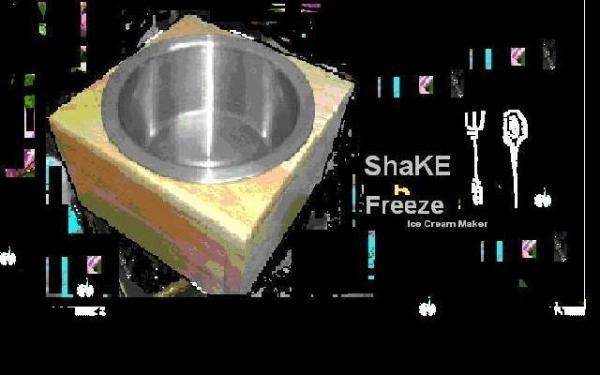Fats,sugar,milk solid,emulsifier,air
The fat component adds richness of flavour, contributes to a smooth texture with creamy body and good meltdown, and adds lubrication to the palate as it is consumed. The milk solids-not-fat component also contributes to the flavour but more importantly improves the body and texture of the ice cream by offering some "chew resistance" and enhancing the ability of the ice cream to hold its air. The sugars give the product its characteristic sweetness and palatability and enhance the perception of various fruit flavours. In addition, the sugars, including the lactose from the milk components, contribute to a depressed freezing point so that the ice cream has some unfrozen water associated with it at very low temperatures typical of their serving temperatures, -15o to -18oC. Without this unfrozen water, the ice cream would be too hard to scoop.
The emulsifiers are a group of compounds in ice cream which aid in developing the appropriate fat structure and air distribution necessary for the smooth eating and good meltdown characteristics desired in ice cream. Emulsifiers are characterized by having a molecular structure which allows part of the molecule to be readily solubilized in a polar compound such as water, and another part of the molecule to be more readily solubilized in non-polar solvents such as fats. As a result, emulsifiers reside at the interface between fat and water, and lower the free energy or tension associated with two immiscible liquids in contact with each other. Their action will be more fully explained in the section below on emulsions and foams.The original ice cream emulsifier was egg yolk, which was used in most of the original recipes.
Air - Ice Cream Key Ingredient
Air is possibly the most important ingredient of all in ice cream. It wasn't until I got involved in actually making ice cream that I ever thought about this! The truth is that without air, ice cream would just be solid with no visual appeal and no inviting texture.
The best quality ice cream has the least air in it – around 20 percent. In fact, in most countries there is actually a legal limit as to how much air commercial ice cream can contain. As I understand it, the limit is generally accepted as being 50 percent.
When making your homemade ice cream, bear in mind that how much you beat it (hand method) or how long you churn/freeze it for (electric ice cream maker) will affect how much air goes into it.
The wonderful thing about making your own ice cream is that you can experiment with this idea and find out for yourself just how much your ice cream's taste and texture is affected by the air you mix into it.






No comments:
Post a Comment